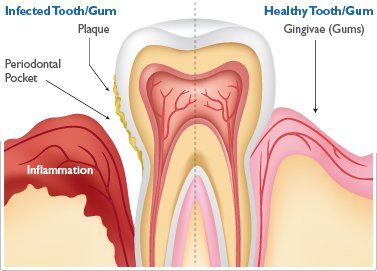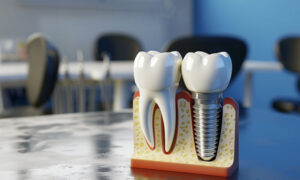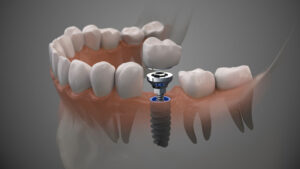Periodontal disease, also known as gum disease, is the #1 cause of tooth loss in adults. The first stage of periodontal disease is gingivitis, which means that the gums are inflamed and bleeding. With improved homecare, through better brushing and flossing, the gums may improve. If periodontal disease is not treated, plaque and tartar go below the gumline. Plaque and tartar are full of harmful bacteria, which cause the gums to pull away from the tooth and the bone surrounding the tooth to be compromised. As the gums pull away from the tooth, a pocket is formed which collects bacteria, food, plaque and tartar below the gums. These areas become difficult to clean as they are below the gumline, where brushing and flossing can not access.
To treat periodontal disease, the first step is to do a deep cleaning, also called scaling and root planing. The goal of a deep cleaning is to remove the plaque and tartar that has collected below the gums. At the end of the deep cleaning, a localized antibiotic may be placed in the deep pockets. The antibiotics fight the bacteria that is causing the gum disease. The combination of the deep cleaning and locally placed antibiotics is the most effective treatment for eliminating harmful bacteria and shrinking the periodontal pockets.
If periodontal disease is not treated, long-term damage can occur to the gums and the bone surrounding the teeth. When the bone around the teeth is lost due to gum disease, the teeth become mobile and may need to be extracted. If gum disease is treated in the early stages, it is reversible. During a dental cleaning, a dental hygienist will evaluate your gums and risk for periodontal disease.




